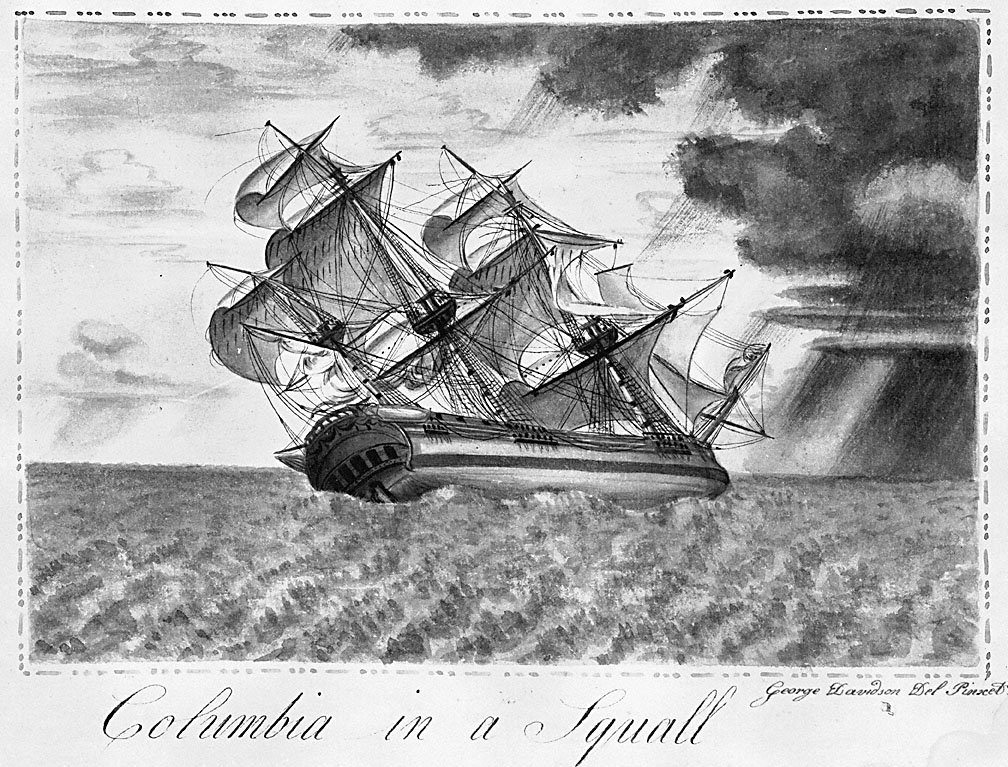For over 150 years, some of the largest shipyards in America were located along the banks of the North River, in what are now the towns of Norwell, Pembroke and Hanover. The locations of the shipyards were far upstream, several miles from the river’s mouth. The location of the Brick Kilns Shipyard, noted on this 1794 map was located near what today is its namesake street off route 139 in Pembroke. Other shipyards were located across the river near the present day location of the Brigantine Circle development in the town of Norwell. Further downstream was the Brooks-Tilden Shipyard in North Marshfield, which is a now conservation land owned by the town.
A modern view of the North River near its mouth at the Scituate-Marshfield line:
Perhaps the most famous ship to be built in the North River shipyards was the Brig “Beaver” which was owned by the British East India Company. Docked in Boston Harbor with a full load of Tea on the night of December 16th, 1773, American Revolutionaries snack aboard and threw the tea into the harbor in an event which would henceforth become known as the Boston Tea Party.
Equally interesting but likely less well known is another North River-built ship, the Columbia. The first American ship to circumnavigate the globe, she was was used in the booming trade with China. Columbia was under the command of Captain Robert Gray on trips to Canton, China. Finding himself outbid by European merchants trading gold and silver, Gray had the idea that he would obtain furs to trade from the American Pacific Northwest en route to China. Hearing rumors of a great river in the Northern Pacific, he set out to find it. According to records* it was May 12th, 1792 when Captain Gray first spotted a great open bay and a wide river along the Pacific coast. He named the river the Columbia after his ship. This name still holds today, as does the name Gray’s Bay. Visible on any modern map, these vast bodies of water separate the states of Oregon and Washington. Today, the city of Portland, Oregon is located at the intersection of the Willamette and Columbia Rivers.
A model of the Ship Columbia, located in a restaurant in Marshfield, Ma:
An artist’s portrayal of the Columbia:
By George Davidson, artist painter who served on board the Columbia Rediviva. [Public domain], via Wikimedia Commons
The banks of the North River between Marshfield and Norwell, not far from where the shipyards were located. This part of the North River is easily accessible from several Marshfield conservation land parks off of Union Street, including the Norris Conservation land, and Stetson Meadows, pictured below:
A view of the North River from the Norris Reservation, just across the river from the land which the Brooks-Tilden shipyards once occupied:
Further upstream in the towns of Pembroke and Hanover, the North River is formed by several tributaries including the Indian Head River, the Iron Mine Brook and the Herring Run. These converge at a point called Luddam’s Ford, which was named for a guide named John Luddam who was said to carry the Governor John Winthrop across the stream on his back in 1632 while on the way to Weymouth. This area was once home to several heavy industries, including an anchor fabricating plant where the anchor of the USS Constitution was made in 1797. More recently, the area was occupied by a rubber company owned by Eugene Clapp, which was lost in a fire in February 1924. A photograph of that factory and its surroundings from that time period is on display at the park. Below are several photos of the Luddam’s Ford Area, including the falls and factory remains:
